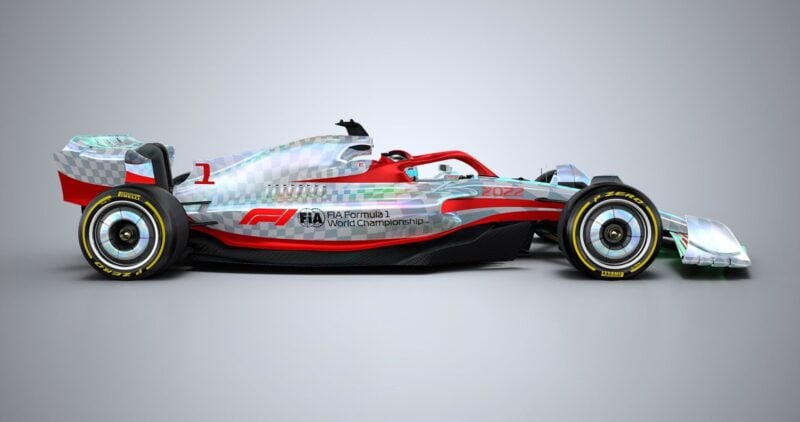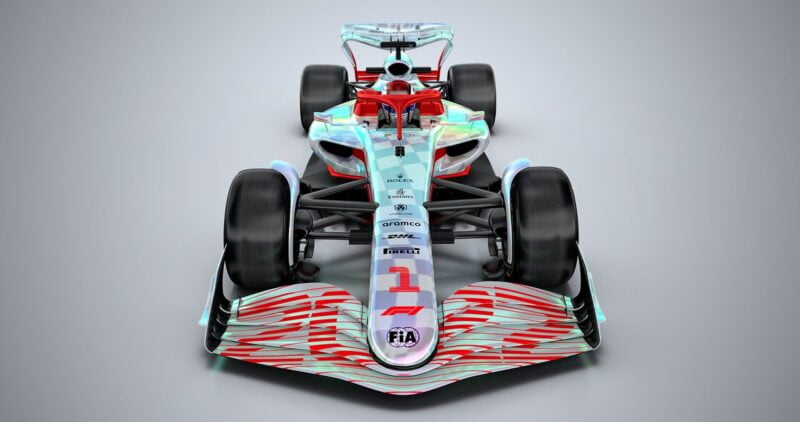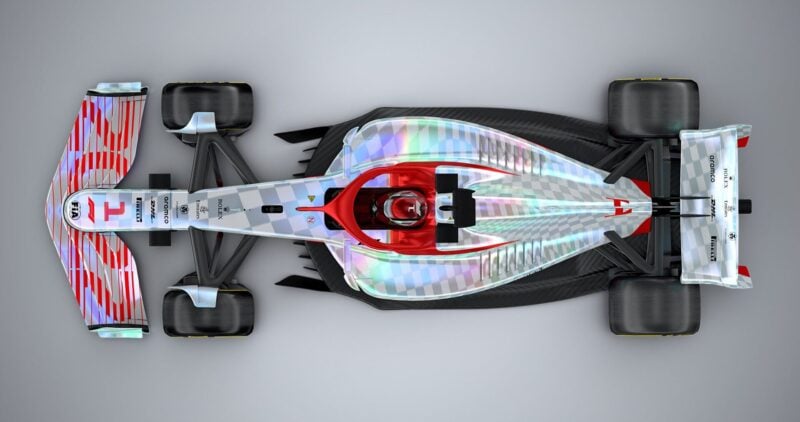After a season’s delay to account for a disrupted 2020, F1 has revealed the first car built to the new 2022 regulations.
Aimed at promoting closer racing and more overtaking, the 2022 car has a number of major changes, all centered on aerodynamics and safety.
One thing that hasn’t changed is the engine formula. The power units for next season will remain as 1.6-liter, turbocharged hybrids, though the fuel will change to a 10% bioethanol mix known as E10.

These engines will be moving slightly heavier cars around though. The new cars will be 5% heavier, at 790kg (1,742lb), partly down to a new, heavier wheel and tire assembly, but also changes to safety structures.
The wheel change is a pretty obvious one, and something that F1 has been trialing recently. Where the old wheels were 13-inch items with enormous sidewalls, the 2022-specification features 18-inch wheels with a far lower profile. This will greatly help with heat management, but also reduce turbulent air caused by the tire flex.
Another aero feature of the new wheels comes by way of wheel covers. These help clean up the air flow as it gets churned up by the rotating wheels, and they’re mandatory pieces.

That’s only the start of the aero changes though. There’s an entirely new front wing concept, designed to channel the air to the sides of the car in combination with new wheel hub winglets that sit over the top of the front tires.
The car floor now features channels which run from front to rear, generating downforce through ground effects and reducing the reliance on airflow over the car. That too will lower the car’s sensitivity to turbulent air while following another car.
At the rear there’s a new wing concept which channels air inwards, with curved rear surfaces to keep the airflow attached. In tandem with a new, high-rake diffuser, the car generates a tighter wake which also moves rapidly upwards. Interestingly, the wing retains the drag reduction system (DRS), with the upper surface flicking up to increase maximum speed.

You’ll spot some other changes too, such as the louvered rear bodywork and the reduction in the size and complexity of the barge boards.
What you won’t see is safety changes, such as an engineering change that will prevent the fuel tank from being exposed in the event of a crash like Romain Grosjean’s incident at Bahrain in 2020, as well as higher energy absorption.
Of course F1 isn’t a spec sport, so this vehicle is merely Formula One’s own prototype of a car which fits the 2022 regulations. By the time next season rolls round, all ten teams will have had the rule book and their own models of this concept for long enough to work out what areas they can exploit to their own advantage, and we should see some very creative interpretations — and even more creative protests from rivals!


Did gtplanet ever talk about NASCAR’s next gen?
Yes they did.
Loud pipes safe lives, and generate excitement.
I am excited for the future of f1. Honestly though not as fast as this year, they are still gonna be fast as hell and now… finally the racing may be as enjoyable as something like MGP to watch.
Make them sound exciting. Make them scream. I couldn’t care less about anything else.
Engines are unchanged for the coming few years
Quick note: THIS IS THE FOM PROTOTYPE. THIS IS NOT WHAT THE TEAMS WILL RUN. F1 WON’T BE A SPEC SERIES.
Jeez, I don’t need to type this comment but there will still be idiots who will get more upvotes anyway because “durr F1 is spec now hurr” and the hivemind agrees. THIS IS NOT FINAL. It’s up to the teams how they’ll interpret the rules and how far they’re going to stretch it.
Now, I would assume most of GTPlanet’s commenters are more level-headed than that (we’ve been seeing this shape and reading about the new regs since 2019), so just be excellent to each other anyway.